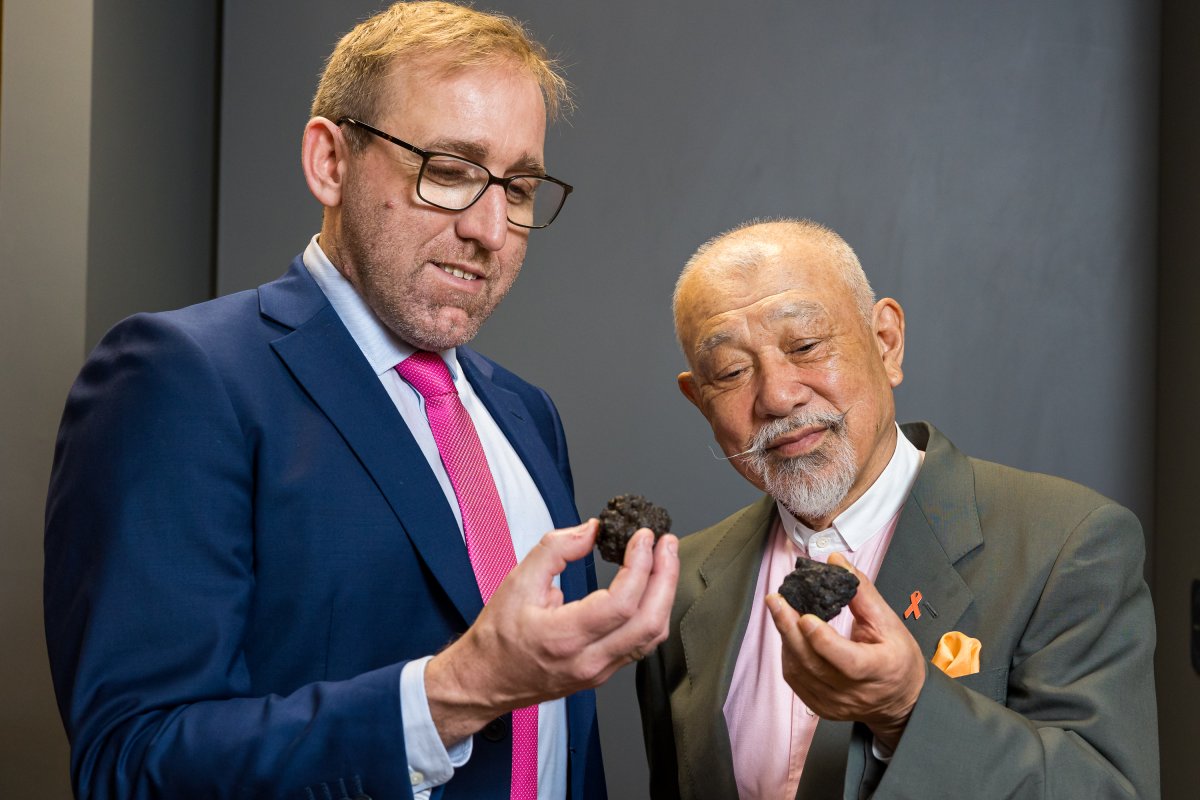-
Why GE Appliances says it’s ready to bring 800 jobs back to the U.S. - 2 mins ago
-
Keyshawn Johnson Returns to Los Angeles Roots in New Limited Series ‘LA Legends’ - 11 mins ago
-
Ga. man sentenced for causing fatal head injuries to 1-year-old boy while his mother was at work - 33 mins ago
-
Announcement: Newsweek Sports Betting Newsletter Launching July 11 - 39 mins ago
-
Senate version of Trump’s “big, beautiful bill” would pummel renewable energy industry with new tax - 41 mins ago
-
Eva Longoria, 50, shows off figure in bikini while skipping Bezos wedding - 48 mins ago
-
Who Won Massive Steelers-Dolphins Trade? Grading Ramsey, Smith for Fitzpatrick Swap - 54 mins ago
-
Teen Mt. Whitney hiker who walked off 120-foot cliff in delirium makes slow recovery, family says - about 1 hour ago
-
Grandma and mother arrested after 2 kids found abandoned and locked in shed without basic necessities - about 1 hour ago
-
Report: Knicks Prepared to Pursue Russell Westbrook in NBA Free Agency - about 1 hour ago
Scientists Seek ‘Dark Oxygen’ in Ocean Depths To Unlock Life’s Secrets
Deep-sea researchers have launched a groundbreaking project to investigate “dark oxygen”—a form of oxygen produced in total darkness on the ocean floor.
The initiative follows last year’s discovery of this phenomenon, which defies the traditional scientific understanding of how life on Earth may have started.
Backed by a $2.4 million support package from The Nippon Foundation, the team will deploy specially designed sensors to some of the ocean’s deepest zones to explore the mysteries surrounding dark oxygen.
igoriss/Getty
Why This Matters
The discovery of dark oxygen has profound implications for our understanding of life on Earth and beyond.
Previously, it was believed that oxygen production required sunlight and photosynthesis. The revelation that oxygen can be generated in complete darkness not only revises theories about the origins of life on Earth but also expands the potential for finding life on planets without sunlight.
This research could also have critical implications for human activity in the deep ocean, especially as industries explore the seabed for resources.
What is Dark Oxygen?
Dark oxygen refers to oxygen produced at extreme ocean depths without the involvement of photosynthesis. This process occurs on the deep ocean floor, where light cannot penetrate.
In 2024, researchers announced that they had discovered strange nodules 13,000 feet beneath the ocean’s surface that acted like natural batteries. These nodules possess an electrical charge that enables them to split water molecules into oxygen and hydrogen, effectively producing oxygen in an environment previously thought incapable of such activity.
What Can Dark Oxygen Tell Us About the Origins of Life?
The presence of oxygen in the deep sea challenges the long-held view that photosynthesis was essential for Earth’s first oxygen supply. This raises the possibility that life on Earth could have begun in the dark depths of the ocean, powered by natural electrochemical processes.
By investigating dark oxygen further, scientists hope to uncover clues about how life may have emerged billions of years ago and whether similar conditions could exist on other planets, supporting life in the absence of sunlight.
What to Know About the Project
The three-year research initiative will focus on deep-sea areas in the Pacific Ocean, including parts of the hadal zone, which extends to depths of 36,000 feet and accounts for 45 percent of the ocean.
Researchers will use autonomous landers equipped with advanced sensors to measure dark oxygen production and study its effects on microbial communities.
The project will also examine whether hydrogen released during this process serves as an energy source for these organisms and how climate change may influence deep-sea biological activity.

The Nippon Foundation
What People Are Saying
Andrew Sweetman, the project’s lead researcher from the Scottish Association for Marine Science, said in a statement: “Our discovery of dark oxygen was a paradigm shift in our understanding of the deep sea and potentially life on Earth, but it threw up more questions than answers.
“This new research will enable us to probe some of these scientific questions. If we show that oxygen production is possible in the absence of photosynthesis, it changes the way we look at the possibility of life on other planets too. Indeed, we are already in conversation with experts at NASA who believe dark oxygen could reshape our understanding of how life might be sustained on other planets without direct sunlight.”
Yohei Sasakawa, chairman of the Nippon Foundation, added: “The sea is vital to sustaining human life and biodiversity, but even today so much of the deep sea is unknown.
“We are proud to support Professor Sweetman’s research into dark oxygen in the hope that we might learn more about the deep sea and the life which exists at the bottom of the ocean.”
What Happens Next
The project will begin field investigations later this year, targeting some of the deepest, darkest parts of the central Pacific.
Researchers aim to identify the source and mechanism of dark oxygen production, explore its potential as an energy source and assess its broader implications for oceanic ecosystems.
With the deployment of cutting-edge technology, this research could revolutionize our understanding of life’s origins and reshape the search for extraterrestrial life.
Do you have a tip on a science story that Newsweek should be covering? Do you have a question about dark oxygen? Let us know via science@newsweek.com.
Reference
Sweetman, A. K., Smith, A. J., de Jonge, D. S. W., Hahn, T., Schroedl, P., Silverstein, M., Andrade, C., Edwards, R. L., Lough, A. J. M., Woulds, C., Homoky, W. B., Koschinsky, A., Fuchs, S., Kuhn, T., Geiger, F., & Marlow, J. J. (2024). Evidence of dark oxygen production at the abyssal seafloor. Nature Geoscience, 17(8), 737–739. https://doi.org/10.1038/s41561-024-01480-8
Source link






























